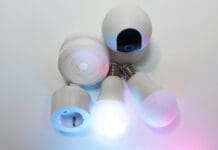This post is also available in:
 עברית (Hebrew)
עברית (Hebrew)
Researchers at Rice University are developing a new kind of computing system—one built not from silicon, but from living microbial cells. With $1.99 million in funding from the U.S. National Science Foundation, the four-year initiative aims to design bioengineered bacterial systems that can function as programmable computing platforms.
The concept behind this emerging field, known as biocomputing, is to harness the natural information-processing capabilities of living organisms. In this case, individual bacterial cells are treated as basic processing units. When interconnected, they can form a distributed network capable of performing computations, learning, and adapting to new information in real time.
Unlike traditional electronics, which rely on fixed architecture and consume substantial energy, biological systems offer inherent advantages in adaptability and energy efficiency. By leveraging the way microbes naturally communicate—via chemical and electrical signals—the research team hopes to build a computing platform that can process information more like a living organism than a circuit board.
What sets the Rice University project apart is its focus on microbial cells rather than brain organoids or other biological tissues more commonly explored in recent bio-AI experiments. The goal is to connect microbial sensing and response mechanisms directly to electronic systems, enabling hybrid platforms that could serve a range of applications—from medical diagnostics to environmental sensing.
One area of interest is the development of smart biosensors. These systems would use bacterial networks to detect specific chemical compounds—such as disease biomarkers—and convert that detection into an electronic signal. This approach could open new possibilities in real-time monitoring and precision diagnostics.
To maintain the bacterial networks, researchers will use continuous culture systems that keep the microbes active and responsive. Over time, the networks are expected to “learn” from their environment, making them increasingly accurate at identifying complex patterns.
The team is also studying the broader implications of such technology, including ethics and regulation. If successful, this research could mark a shift toward bio-integrated computing systems capable of functions far beyond conventional machines.


























